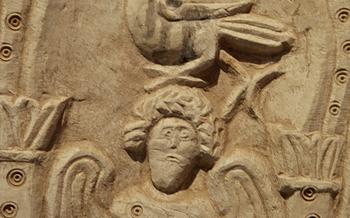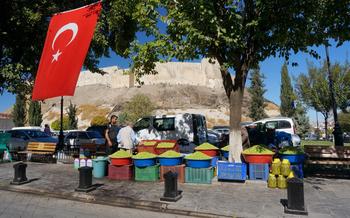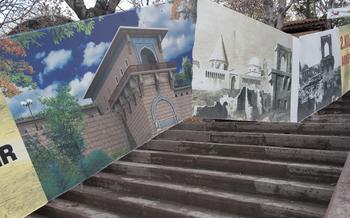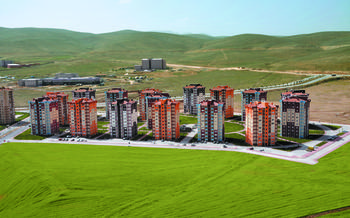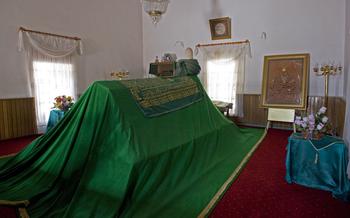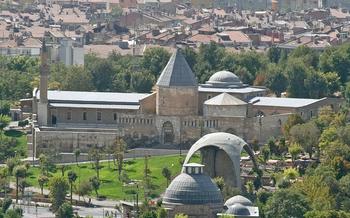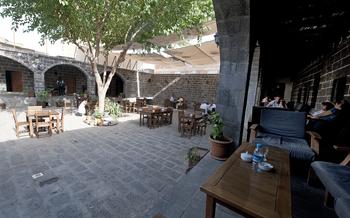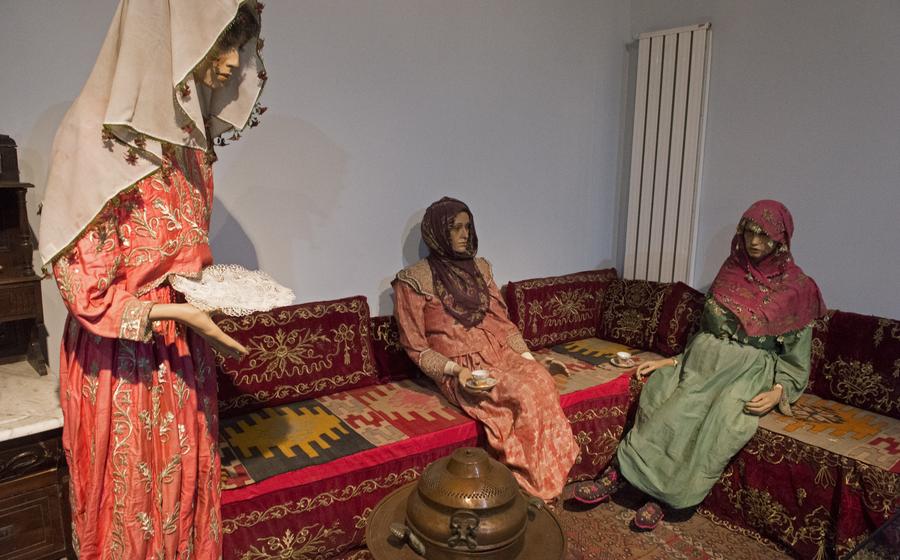
The Anatolian Carpet Museum
- The Anatolian Carpet Museum
- Location and Accessibility
- Museum Layout
- Carpet Weaving Techniques
- Types of Carpets
- Carpet Materials
- Carpet Designs
- Geometric Patterns
- Motifs
- Color Combinations
- Carpet Making Process
- Contemporary Carpets
- Carpet Care and Maintenance
- Museum Events and Programs
- Research and Conservation
- Museum Shop
- Insider Tip: Discover the Art of Carpet Making in Isparta
The Anatolian Carpet Museum
The Anatolian Carpet Museum, located in the heart of Isparta, Turkey, is a treasure trove of textile art and cultural heritage. Founded in 1977, the museum is dedicated to preserving and promoting the rich tradition of carpet weaving in Turkey, particularly the renowned Anatolian carpets. With a vast collection of over 3,000 carpets, the museum stands as a testament to the artistry, craftsmanship, and cultural significance of Anatolian carpets.
The museum's unique features set it apart from other carpet museums worldwide. Its collection encompasses a diverse range of carpets from various regions of Anatolia, showcasing the distinct styles, techniques, and designs that characterize each region. The museum also houses a specialized library and research center, providing a valuable resource for scholars and researchers studying the history and art of carpet weaving.
Through its extensive collection and educational initiatives, the Anatolian Carpet Museum plays a pivotal role in preserving and promoting the cultural heritage of Turkish carpet weaving. The museum's commitment to showcasing the artistry and craftsmanship of Anatolian carpets ensures that this traditional art form continues to thrive and captivate audiences worldwide.
Location and Accessibility
The Anatolian Carpet Museum is conveniently located in the heart of Isparta, Turkey, at Yusuf Ziya Paşa Cad. No:19, 32200 Merkez/Isparta. It is situated within easy walking distance of many other cultural attractions, including the Isparta Museum and the Kurşunlu Mosque.
To reach the museum, visitors can take advantage of the city's well-connected public transportation system. Bus routes 1 and 2 stop nearby, providing convenient access from various parts of Isparta. Alternatively, taxis are readily available and offer a comfortable and direct way to reach the museum.
For those arriving by car, the museum offers ample parking space, ensuring a hassle-free visit. The parking area is located adjacent to the museum building, providing easy access for visitors with vehicles.
The museum's hours of operation are from 8:30 AM to 5:30 PM, Tuesday through Sunday. It is closed on Mondays. Admission to the museum is free of charge, making it an accessible and affordable attraction for all visitors.
Museum Layout
The Anatolian Carpet Museum is a treasure trove of carpets from different regions of Turkey and beyond, each with its own unique story to tell. The museum is divided into several sections, each showcasing a different aspect of carpet weaving. The galleries are arranged thematically, allowing visitors to explore the evolution of carpet weaving techniques, designs, and materials over time.
The museum's main gallery features a stunning display of carpets from all over Anatolia, showcasing the diverse weaving styles and motifs of each region. Visitors can admire the intricate geometric patterns of Konya carpets, the vibrant colors of Gördes carpets, and the delicate floral designs of Hereke carpets.
Another section of the museum is dedicated to the history of carpet weaving in Turkey. Here, visitors can learn about the origins of carpet weaving and its significance in Turkish culture. They can also see examples of ancient carpets that have been preserved in remarkable condition.
The museum also has a section where visitors can observe the carpet weaving process firsthand. Skilled weavers demonstrate the traditional techniques of carpet weaving, using the same tools and materials that have been used for centuries. Visitors can watch as the weavers create beautiful and intricate carpets, and they can even try their hand at weaving a small carpet themselves.
Carpet Weaving Techniques
The Anatolian Carpet Museum showcases the diverse carpet weaving techniques that have been passed down through generations in Turkey. Each technique holds cultural significance and reflects the expertise of skilled artisans.
Pile Knotting: One of the most common techniques is pile knotting, where individual knots are tied onto the warp threads, creating a dense and velvety surface. This technique allows for intricate designs and patterns.
Flat Weaving: Flat weaving involves interlacing the warp and weft threads without creating pile loops. This technique produces durable and reversible carpets with geometric patterns and bold colors.
Soumak: Soumak weaving creates a distinctive texture by wrapping the weft threads around pairs of warp threads, resulting in diagonal patterns and vibrant colors.
Kilim: Kilim carpets are flat-woven using a weft-faced technique, creating geometric designs and bold patterns without pile.
Hereke: Hereke carpets are renowned for their intricate designs and use of silk, creating carpets of exceptional quality and value.
Embroidery: Embroidery techniques are sometimes incorporated into carpets, adding decorative elements and enhancing the overall design.
Types of Carpets
The Anatolian Carpet Museum proudly showcases the diverse range of carpets produced in Turkey, each with its own distinct characteristics and cultural significance. Visitors can explore various types of carpets, including:
-
Regional Variations: Carpets from different regions of Turkey exhibit unique designs, patterns, and color combinations. For instance, carpets from the Konya region are known for their geometric patterns and vibrant colors, while carpets from the Uşak region are renowned for their intricate floral motifs and soft pastel hues.
-
Traditional Designs: The museum houses an impressive collection of carpets featuring traditional Anatolian designs, passed down from generation to generation. These designs often incorporate motifs inspired by nature, such as flowers, birds, and trees, as well as geometric patterns that symbolize good luck, prosperity, and protection.
-
Classification and Value: The classification and value of carpets depend on various factors, including the materials used, the weaving technique, the age, and the condition of the carpet. Carpets made from high-quality materials, such as silk or fine wool, and woven using intricate techniques, such as the Gördes knot, are generally more valuable than those made from coarser materials and woven using simpler techniques.
-
Iconic Carpets: The museum's collection boasts some of the most iconic and valuable carpets in Turkey. One such carpet is the "Holbein Carpet," named after the famous German painter Hans Holbein the Younger, who depicted it in his painting "The Ambassadors." This 16th-century carpet is renowned for its exquisite craftsmanship, intricate designs, and vibrant colors.
Carpet Materials
The Anatolian Carpet Museum showcases the diverse materials used in carpet making, each contributing to the unique characteristics and value of these exquisite creations. Wool, obtained from sheep, goats, and camels, is the most commonly used material due to its durability, warmth, and natural elasticity. Silk, renowned for its luxurious sheen and softness, is employed for intricate designs and high-end carpets. Cotton, known for its comfort and breathability, is often used in summer rugs or as a blend with other fibers.
The choice of materials significantly impacts the quality, durability, and appearance of carpets. Wool carpets are highly durable and resilient, making them ideal for areas with high foot traffic. Silk carpets, with their delicate fibers, are prized for their luxurious feel and intricate designs. Cotton carpets offer a soft and comfortable feel, making them suitable for bedrooms and living rooms.
In addition to these traditional materials, the museum also highlights sustainable practices in carpet production. Natural dyes derived from plants and insects are used to create vibrant and eco-friendly colors. Recycled materials, such as wool from old carpets, are incorporated to reduce waste and promote sustainability.
The museum's collection showcases carpets made from various materials, allowing visitors to appreciate the distinct qualities and craftsmanship associated with each choice.
Carpet Designs
The Anatolian Carpet Museum showcases a remarkable collection of carpets that are not only visually stunning but also rich in symbolism and cultural significance. Each carpet tells a story, capturing the essence of Anatolian culture, traditions, and beliefs. The geometric patterns, intricate motifs, and vibrant color combinations create a mesmerizing display that leaves visitors in awe.
Geometric Patterns
Geometric patterns play a prominent role in Anatolian carpets. These patterns are often inspired by nature, such as flowers, leaves, and stars, and are arranged in symmetrical and harmonious compositions. The repetition of geometric shapes creates a sense of rhythm and balance, adding depth and dimension to the carpets.
Motifs
Motifs are another essential element of Anatolian carpet designs. These symbolic elements can represent a variety of things, from animals and plants to religious symbols and abstract concepts. Some common motifs include the eagle, which represents strength and courage; the lion, which symbolizes power and majesty; and the tree of life, which represents growth and abundance.
Color Combinations
The use of color in Anatolian carpets is both vibrant and sophisticated. Carpets often feature a rich palette of colors, including deep reds, blues, greens, and yellows. These colors are carefully combined to create harmonious and visually appealing compositions. The colors not only enhance the beauty of the carpets but also carry symbolic meanings. For example, red represents passion and energy, while blue represents peace and tranquility.
The combination of geometric patterns, motifs, and color combinations creates a unique and captivating visual language that is characteristic of Anatolian carpets. These carpets are not just floor coverings but also works of art that reflect the creativity, skill, and cultural heritage of the Anatolian people.
Carpet Making Process
The Anatolian Carpet Museum provides a fascinating glimpse into the intricate process of carpet making, a centuries-old tradition that has been passed down through generations. Visitors can witness the entire process, from the initial spinning of the yarn to the final weaving and finishing.
Spinning the Yarn: The first step in the process is to spin the yarn that will be used to weave the carpet. This is done using a traditional spinning wheel, which twists and draws out the fibers until they form a strong and durable thread. The choice of fibers, such as wool, silk, or cotton, determines the quality and characteristics of the final carpet.
Dyeing the Yarn: Once the yarn is spun, it is dyed using natural or synthetic dyes to achieve the desired colors and patterns. Traditional methods of dyeing involve using plant-based dyes, such as madder root for red, indigo for blue, and saffron for yellow. These dyes create vibrant and long-lasting colors that are resistant to fading.
Warping the Loom: The next step is to prepare the loom for weaving. The warp threads, which run lengthwise, are stretched across the loom and secured. The number of warp threads determines the width of the carpet.
Weaving the Carpet: The weaving process begins by passing the weft threads, which run widthwise, over and under the warp threads. Each row of weft threads is carefully beaten down using a comb-like tool to create a dense and even weave. The weaver follows a specific pattern to create the desired design.
Finishing the Carpet: Once the carpet is woven, it is removed from the loom and undergoes a series of finishing processes. These include trimming the excess yarn, washing and drying the carpet, and applying a final treatment to protect the fibers and enhance the colors. The finished carpet is then ready to be displayed or sold.
The carpet-making process requires immense skill, patience, and attention to detail. Each step is crucial in ensuring the quality, durability, and beauty of the final product. Visitors to the Anatolian Carpet Museum can gain a deep appreciation for the artistry and craftsmanship involved in this ancient tradition.
Contemporary Carpets
The Anatolian Carpet Museum showcases the evolution of carpet weaving in modern times and the influence of contemporary design trends. These carpets often blend traditional techniques with innovative aesthetics, resulting in unique and visually striking pieces.
One of the highlights of the contemporary section is a carpet designed by a young artist who incorporates abstract patterns and bold colors into her work. This carpet breaks away from the conventional geometric designs and showcases the artist's personal style and interpretation of Anatolian weaving traditions.
Another contemporary carpet features a combination of traditional motifs with modern materials, such as metallic threads or recycled fibers. This carpet represents the fusion of old and new, demonstrating how carpet weavers continue to push boundaries and explore new possibilities while preserving their heritage.
By showcasing contemporary carpets, the museum acknowledges the dynamic nature of Anatolian carpet weaving and its ability to adapt to changing times. These carpets not only reflect the creativity of contemporary designers but also contribute to the ongoing legacy of Anatolian craftsmanship.
Carpet Care and Maintenance
Proper care and maintenance are crucial to ensuring the longevity and beauty of carpets. The Anatolian Carpet Museum provides valuable insights into how to preserve these textile masterpieces. Visitors can learn about the importance of regular cleaning, which helps remove dirt, dust, and allergens, preventing damage to the fibers. The museum also emphasizes the significance of proper storage conditions, such as controlled temperature and humidity levels, to prevent fading, discoloration, and insect infestations. By following these guidelines, carpet owners can ensure that their cherished carpets remain vibrant and well-preserved for generations to come.
Museum Events and Programs
The Anatolian Carpet Museum organizes a variety of events and programs throughout the year to engage visitors and promote carpet weaving traditions. These events not only provide educational opportunities but also offer a chance to experience the beauty and craftsmanship of Anatolian carpets firsthand.
One of the highlights of the museum's programming is the annual "Carpet Weaving Festival." This festival brings together master weavers, artisans, and enthusiasts from across Turkey to showcase their skills and share their knowledge. Visitors can witness live demonstrations of carpet weaving, learn about different techniques, and admire the intricate designs created by these talented artisans.
In addition to the festival, the museum hosts regular workshops and classes on carpet weaving, design, and history. These workshops are designed for participants of all skill levels, from beginners who want to learn the basics to experienced weavers who want to refine their techniques. Participants can choose from various workshops, including hands-on weaving sessions, design workshops, and lectures on the history of carpet weaving.
The museum also organizes educational programs for school groups and families. These programs include guided tours, interactive activities, and storytelling sessions that introduce children to the world of Anatolian carpets. By engaging with these programs, children can develop an appreciation for the cultural heritage of Turkey and learn about the skills and craftsmanship involved in carpet weaving.
Participating in the museum's events and programs is a wonderful way to deepen your understanding of Anatolian carpets, connect with the local community, and support the preservation of this traditional craft. Be sure to check the museum's website or inquire at the information desk for more information on upcoming events and programs during your visit.
Research and Conservation
The Anatolian Carpet Museum is not only a repository of magnificent carpets; it is also a hub of knowledge and research dedicated to preserving and promoting the rich tradition of carpet weaving. The museum collaborates with scholars, institutions, and experts from around the world to advance the study of carpets and their cultural significance. Researchers have access to a wealth of resources, including the museum's extensive collection, library, and archives. The museum also organizes conferences, workshops, and symposia to facilitate the exchange of ideas and knowledge among scholars and enthusiasts.
In addition to research, the museum is actively involved in conservation efforts to preserve and restore valuable carpets. Carpets, especially antique and delicate ones, are susceptible to damage from factors such as age, light, and improper storage. The museum's conservation team employs specialized techniques and materials to clean, repair, and restore carpets to their original condition. This meticulous work ensures that future generations can appreciate the beauty and craftsmanship of these treasured artifacts.
Museum Shop
The Anatolian Carpet Museum houses a well-stocked museum shop where visitors can delve deeper into the world of Turkish carpets and take home a piece of the experience. The shop offers a carefully curated selection of high-quality carpets, ranging from traditional designs to contemporary interpretations, ensuring that there is something for every taste and budget. Visitors can browse through an array of sizes and colors, discovering the intricate patterns and craftsmanship that make each carpet unique.
In addition to carpets, the shop also offers a variety of related souvenirs and gift items that celebrate the rich textile heritage of Isparta. From miniature carpets and rugs to decorative items and woven accessories, visitors can find something special to cherish as a reminder of their visit to the museum. The proceeds from the shop directly support the museum's activities and initiatives, contributing to the preservation and promotion of Turkish carpet weaving traditions for future generations.
Insider Tip: Discover the Art of Carpet Making in Isparta
Delve deeper into the world of Anatolian carpets by visiting a traditional carpet weaver's workshop in Isparta. Witness the intricate process of carpet making firsthand as skilled artisans demonstrate the various weaving techniques, from spinning the yarn to weaving and finishing. Learn about the traditional tools and materials used, and gain a newfound appreciation for the skill and dedication required to create these beautiful works of art.

